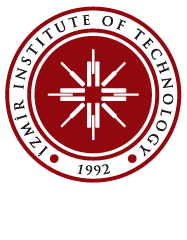About Us
What is Technology, Design and Innovation Management ?
It is a field of science that combines engineering, science and management fields to plan, develop and apply technology in order to achieve organizations’ strategic and operational goals and create value for organizations by combining their resources with technology. Technology and innovation management is recognized as an academic field worldwide. Academic studies on technology and innovation management have increased significantly over the past 35 years, and the upward trend continues. The number of publications in the field of technology, innovation and entrepreneurship management has increased over 100% in the last 10 years.
The number of technology and innovation management departments in the world has greatly increased over the past 25 years. There were more than 160 programs in this field in 2000, and this number continues to increase.
Today, Research and Development (R&D) activities and innovation are considered necessary to develop and even protect the assets of institutions and countries. The relationship between innovation, growth and development is multifaceted, and institutions and countries regularly allocate resources and organize activities to achieve specific goals for research and development. R&D spending per GDP in Turkey increased from 0.45% to 0.96% from 1996 to 2017. This rate is 2.4% in OECD countries and 1.96% in European Union countries (2015).
IzTech founded Turkey’s first “Technology, Design and Innovation Management” program in the wake of similar programs at MIT, Stanford, Berkeley, Portland State, Cambridge, Georgia Tech, Northern Technology Institute, and Delft University to meet national and regional technology, innovation management and entrepreneurship research and trained personnel needs.
Why are Technology and Innovation Important ?
Today, Research and Development (R&D) activities and innovation are considered necessary to develop and even protect the assets of institutions and countries. The relationship between innovation, growth and development is multifaceted, and institutions and countries regularly allocate resources and organize activities to achieve specific goals for research and development.
Turkey’s science, technology, innovation and export of technological products has changed over time and has different properties when compared with other countries.
Turkey shows positive growth and development in knowledge and skills in the fields of science and technology. However, the transformation of these skills and knowledge into value production remains limited.
In addition to R&D functions, efforts to increase the efficiency and impact in these activities increase daily, and policy and management processes are redesigned accordingly. It is not enough to engage in innovation activities alone; a systematic approach to effective use of existing knowledge and skills pool and value generation must be developed.
There are many local and national stakeholders in technology and innovation management. The vast majority of stakeholders are in industry, government executive and policy-making, support units, consultancy institutions and universities.
- Ministry of Industry, Tübitak, Kosgeb, Development Agencies
- Industry and Commerce Chambers
- Consulting Firms
- Angel Investors
- Universities
- Technopark, Technology Transfer Offices (TTO), R&D and Design Centers
The three main stakeholder groups are industries that use technology, universities that produce technology, and organizations that mediate between the two (universities and public agencies that organize the entire innovation ecosystem).
The three main stakeholders carry out the following technology and innovation activities in addition to their basic functions.
Industry
- Developing product strategy development while conforming with corporate strategy
- Establishing corporate technology policy
- Predicting trends in technology, market, and innovation.
- Developing product management and product design.
- Establishing corporate innovation organizations
- Enriching the corporate innovation culture
Universities
- Examining technology markets and making predictions
- Identifying technology development priorities
- Creating necessary organization, training and arrangements for lasting and result-oriented industry cooperation
Public Institutions
- Technology Predictions
- Technology Roadmap
- Identifying critical sectoral and technologies that ensure economic progress
- Establishing and operating incentive systems, evaluating results, and making necessary arrangements
- Establishing and maintaining new support organizations
A systematic study of successful research and development efforts, efficient use of research resources and skills, and the profound and widespread effect of results is necessary.
